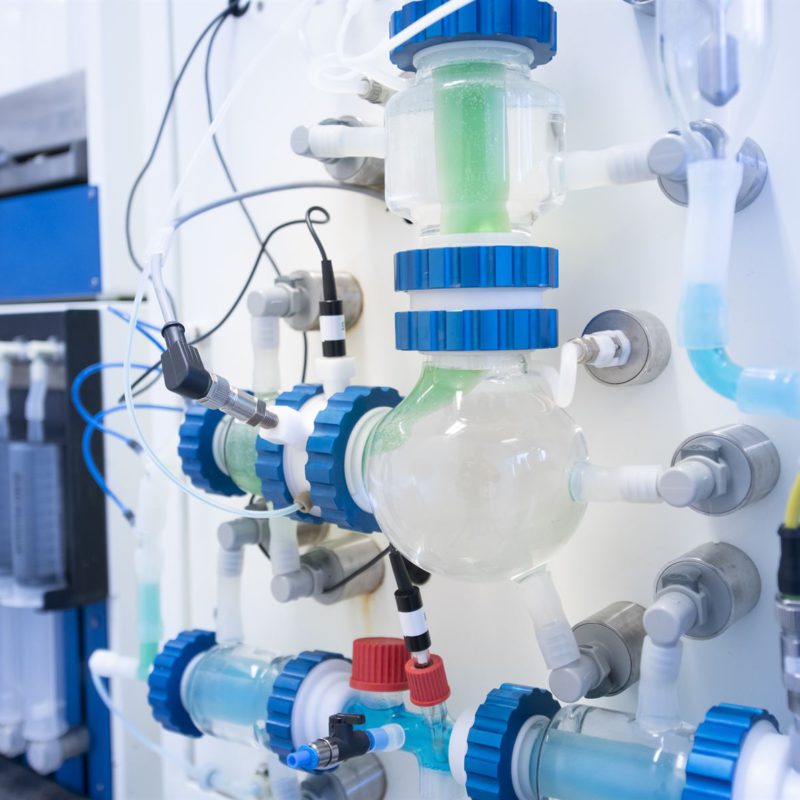TIM Academy
FAQ
Technical questions

What are the stomach and intestinal volumes in TIM-1 compared to the human gastrointestinal tract?
The volume in the stomach compartment of TIM is up to 300 mL for the fasting state as well as the fed state. This is the size of a glass of water (200-250 mL) or a small meal plus the swallowing of saliva (50-100 mL). The volumes in the duodenum, jejunum and ileum compartments are 55 mL, 115-130 mL and 115-130 mL, respectively. This is quite comparable with the total water-volume in the human adult small intestine (200-400 ml).
Can you also handle solid meals in the TIM system?
In the TIM system we can work with liquid meals (water, milk, alcoholic drinks and (semi-) solid meals, including realistic type of meals with bread or potatoes with vegetables. Beside our “standard” meals, such as a European Continental Breakfast, the High Fat Meal and the Low Fat Meal as recommended by the FDA (for pharma studies) and AHA (for healthy life), respectively, we also are able to prepare meals by given recipe.
How do you reproduce and control gastric emptying in fasting and fed states?
The gastric emptying is controlled via a computer ‘protocol’ based on an equation calculated from in vivo data. We have specific set-points in the equation for simulating gastric emptying related to animal species (human, dog, pig), age (infants, adults, elderly), type and amount of oral intake: water for fasting state and meal matrix for fed state. On the other hand the positioning of the pyloric sphincter determines a difference in emptying of the liquid phase and solid phase (faster or slower, resp.). In this way we simulate the realistic in vivo gastric emptying (validated against animal experiments and measurements in humans).
What is the gastric pH under fasting and fed state conditions?
The starting pH in the stomach is dependent on the type of intake. Under fasting state conditions (i.e. intake of water) the gastric pH is 2.4-3.5. Under fed state conditions (i.e. with intake of a meal matrix), gastric pH is dependent on the type of meal. For example, with a meal of yoghurt, gastric pH is 4.6, while a high fat meal gastric pH is 6.5. By controlling the secretion of gastric acid, we simulate the human gastric pH curve in relation to the fed or fasting state, and gradually decrease gastric pH in time to pH 1.8.
Are the conditions simulated in TIM determined case by case depending upon the respective physical properties of drugs?
We do not adapt the TIM conditions case by case depending on the physical-chemical properties of the drug as such, but on the expected GI conditions of the drug user. These conditions may be dependent on, for example, the age, health status, and intake of drinks and/or foods and/or other drugs (e.g. see above under gastric pH). However, based on the water solubility or the lypophilicity of the compound (e.g. LogP > 2.5), we install, at different positions of the TIM system, a membrane to dialyze water soluble compounds or a membrane to filtrate the (mixed) micelles containing the free fatty acids and fat solubilized compounds.
In addition, based on the type of formulation, e.g. enteric coated tablets, we simulate the House Keeper Wave (see below) for transit of the formulation from the stomach into the small intestine compartments.
Is it possible to visually monitor the disintegration of dosage forms in the GI compartments?
The TIM system is transparent. You can visually monitor the dosage form in the stomach and intestine compartments (especially under fasting state). When requested, we can remove the formulation for short periods from the lumen to capture photographs of the disintegration of dosage forms.
What kind of membranes are used?
For water soluble compounds we use a dialysis membrane with a cut-off of 5-7 kDa. Small water-solubilized molecules are dialyzed, in contrast to larger molecules (e.g. proteins). For lipophylic compounds we use a membrane with a larger cut-off (0.05 micron) for the filtration of mixed micelles containing free fatty acids and fat solubilized nutrients and drugs. The biological processes can be studied off-line, by transferring TIM-samples to cultured cell lines (after dilution).
Is it possible to take lumen samples from the GI compartments during the experiment?
We can collect 1-2 ml samples from the lumen of gastrointestinal compartments in time (e.g. every 30 to 60 min) for analysis. Collection of larger volumes or more sampling at more frequent timepoints will disturb (to some extent) the controlled conditions in the TIM-1 system.
What is the volume of the large intestine model?
The volume of the TIM-2 compartment is approximately 160 ml. The amount of free water is much lower due to the relatively high dry matter content of the colon.
How is peristaltic mixing in the colon performed?
The contents in the colon are continuously mixed with influx from the ileum and the ‘secreted’ bicarbonate by peristaltic movements of the flexible wall of the colon compartment. This allows mixing ofdense and viscous content.
How do you maintain the physiological ‘microbiota balance’ between various bacterial groups that utilize different substrates in the TIM-2 system?
By strictly controlling the conditions in the lumen of the colon and the intake of ‘digested food’. We can reliably maintain realistic composition and colon microbiota activity for one to two weeks in the TIM-2 system. This is based on outcomes of long-term experiments using TIM-2 where the composition of the colon microbiota was monitored with DNA-based technologies (i.e. Intestinal-chip for human adult and infant colon microbiota).
It is not unlikely that one of our compounds might stick to plastics/silicon tubing. Do you check this before starting a study and can you overcome this during a study?
We have had compounds that were likely to stick to silicone tubing. Our standard procedure for (potential sticky) compounds is to run a pilot in TIM with the compound. We collect samples from dialysate/filtrate, ileal emptying en residual material, and have these analyzed to calculate the mass balance of the compound. Based on the total recovery and/or the distribution of the active in the respective samples we can find out if sticking to silicone tubing is an issue. We discuss this item with the sponsor before performing the main study.


